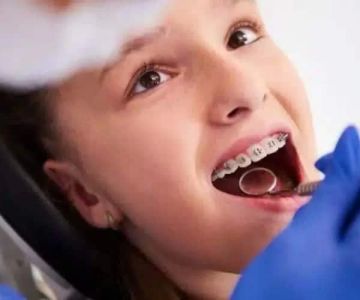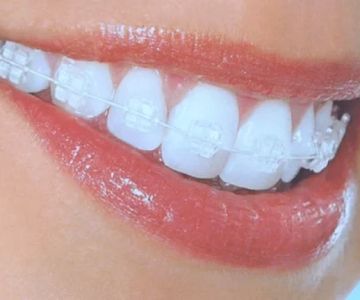Good dental health is essential for overall well-being, yet many people are unaware of the significant role that occlusion—the alignment of teeth—plays in maintaining it. Occlusion problems, including overbite, underbite, open bite, and crossbite, are more common than one might think. These issues are not only a matter of aesthetics but can also lead to complex dental complications if left untreated. Understanding these common occlusion problems is the first step towards recognizing the need for early intervention and treatment.
Overbite: When the Upper Teeth Overlap the Lower Teeth
Overbite is one of the most prevalent occlusion problems encountered by dental professionals. Characterized by the upper teeth extending significantly over the lower teeth, this condition can cause excessive wear on the teeth, gum damage, and even temporomandibular joint disorders. Various studies have highlighted that nearly 20% of the world’s population experiences an overbite to some degree, emphasizing the importance of awareness and treatment. Treatments often range from orthodontic braces to more complex jaw surgeries, depending on the severity of the situation. At Dentistry Toothtruth, professionals work to assess each case individually, offering personalized treatment plans.
Underbite: A Challenge of Misalignment
An underbite is another common occlusion issue where the lower teeth project beyond the upper teeth. This misalignment can lead not only to functional problems like difficulty chewing and speaking but also to emotional distress caused by aesthetic concerns. According to orthodontic research, about 5-10% of the global population is affected by an underbite. Corrective measures can include orthodontic treatments such as the use of braces or appliances and potentially surgical interventions in more severe cases. The team at Dentistry Toothtruth has extensive experience in managing underbite cases, ensuring that patients receive comprehensive care tailored to their specific needs.
Open Bite: The Absence of Overlap
An open bite, where the upper and lower teeth do not meet when the jaw is closed, can lead to speech and mastication difficulties. This condition often arises from habits developed in childhood, such as thumb sucking or prolonged pacifier use. Current studies indicate that open bites account for approximately 0.4% to 5% of individuals globally. Treatment for open bite may involve behavioral interventions to eliminate harmful habits, orthodontic solutions to realign the teeth, or surgical options in cases where skeletal discrepancies are present. At Dentistry Toothtruth, a holistic approach is adopted to ensure comprehensive solutions to this complex issue.
Crossbite: Side-to-Side Misalignment
Crossbite occurs when the upper teeth fit inside the lower teeth on either the front or sides of the mouth. This misalignment can lead to tooth decay, gum disease, and bone loss if not treated promptly. Research shows that crossbites can affect up to 16% of children and 10% of adults. Treatment often involves braces or retainers to gradually correct the alignment. A professional assessment at Dentistry Toothtruth ensures that any crossbite complications are addressed promptly, with the most appropriate treatment methods employed.
The Importance of Timely Intervention and Treatment
In summary, occlusion problems like overbite, underbite, open bite, and crossbite are critical dental issues that require attention to prevent future complications. Early diagnosis and intervention are key to successful treatment, underscoring the importance of regular dental check-ups. If you suspect any alignment issues, consulting with experienced professionals at Dentistry Toothtruth can provide clarity and pave the way for a healthier smile. By taking proactive steps, individuals can maintain optimal dental health and improve their quality of life.




 Westgate Dental Arts
Westgate Dental Arts Coventry Family Dental
Coventry Family Dental Familia Dental
Familia Dental Dr. Daniel S. Fife, DDS
Dr. Daniel S. Fife, DDS Dentistry At Suburban Square: Michael I. Wollock, DMD
Dentistry At Suburban Square: Michael I. Wollock, DMD Comfort Care Dental
Comfort Care Dental The Importance of Oral Health Education During Pregnancy for a Healthy Pregnancy
The Importance of Oral Health Education During Pregnancy for a Healthy Pregnancy Why Skipping Dental Checkups Can Lead to Bigger Oral Health Problems
Why Skipping Dental Checkups Can Lead to Bigger Oral Health Problems Advantages of Porcelain Dental Restorations
Advantages of Porcelain Dental Restorations Best Tips for Brushing Your Teeth Properly for Healthy Gums: Essential Techniques for Oral Health
Best Tips for Brushing Your Teeth Properly for Healthy Gums: Essential Techniques for Oral Health How Can Diabetes Cause Tooth and Gum Problems? Preventing and Managing Oral Health Issues
How Can Diabetes Cause Tooth and Gum Problems? Preventing and Managing Oral Health Issues Healthy Habits for Promoting Good Oral Health and Hygiene: Tips for a Healthy Smile
Healthy Habits for Promoting Good Oral Health and Hygiene: Tips for a Healthy Smile